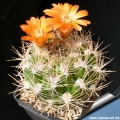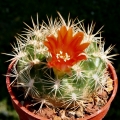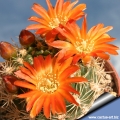Donate now to support the LLIFLE projects.
Your support is critical to our success.
Your support is critical to our success.
Accepted Scientific Name: Rebutia neocumingii subs. trollii (Oeser) D.R.Hunt
Cactaceae Consensus Init. 4: 8. 1997 [Oct 1997]
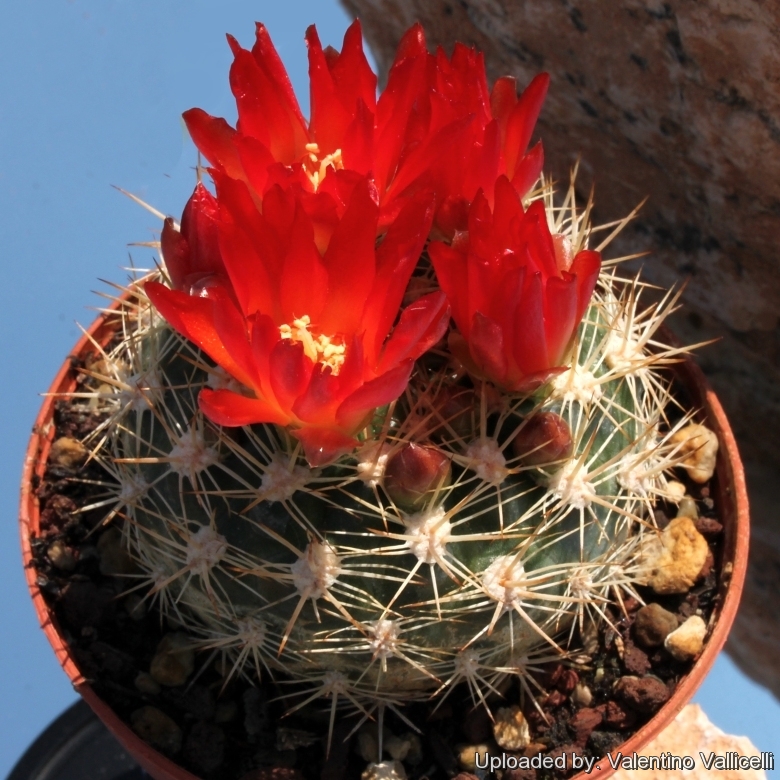
Gymnorebutia neocumingii subs. trollii (Rebutia neocumingii subs. trollii) Photo by: Valentino Vallicelli
This is among the most vigorous and earliest bloomers. Flowers are usually orange or even red.
This is among the most vigorous and earliest bloomers. Flowers are usually orange or even red.
Synonyms:
- Rebutia neocumingii subs. trollii (Oeser) D.R.Hunt
- Gymnorebutia neocumingii subs. trollii (Oeser) Doweld
- Weingartia neocumingii var. trollii (Oeser) Donald
- Weingartia trollii Oeser
See all synonyms of Rebutia neocumingii
back
Accepted name in llifle Database:Rebutia neocumingii (Backeb.) D.R.Hunt
Bradleya 5: 94 (1987)
Synonymy: 67
- Rebutia neocumingii (Backeb.) D.R.Hunt
- Bridgesia cumingii (Hopffer) Backeb.
- Echinocactus cumingii Hopffer
- Echinocactus cumingii Regel & E.Klein bis
- Gymnantha cumingii (Hopffer) Y.Itô
- Gymnocalycium cumingii (Britton & Rose) Hutchison
- Gymnorebutia neocumingii (Backeb.) Doweld
- Hildmannia cumingii (Hopffer) Kreuz. & Buining
- Lobivia cumingii (Hopffer) Britton & Rose
- Spegazzinia cumingii (Hopffer) Backeb. in Backeb. & F.M.Knuth
- Weingartia cumingii (Hopffer) Backeb. & Oosten
- Weingartia neocumingii Backeb.
- Rebutia corroana Cárdenas
- Gymnocalycium pulquinense var. corroanum (Cárdenas) Hutchison
- Gymnorebutia pulquinensis subs. corroana (Cárdenas) Doweld
- Sulcorebutia corroana (Cárdenas) Bredero & Donald
- Sulcorebutia neocorroana F.H.Brandt
- Weingartia corroana (Cárdenas) Cárdenas
- Weingartia pulquinensis var. corroana Cárdenas
- Rebutia neocumingii subs. lanata (F.Ritter) D.R.Hunt
- Sulcorebutia lanata (F.Ritter) F.H.Brandt
- Weingartia lanata F.Ritter
- Rebutia neocumingii subs. pulquinensis (Cárdenas) D.R.Hunt
- Gymnocalycium pulquinense (Cárdenas) Hutchison
- Sulcorebutia pulquinensis (Cárdenas) F.H.Brandt
- Weingartia pulquinensis Cárdenas
- Weingartia attenuata F.H.Brandt
- Weingartia brachygraphisa F.H.Brandt
- Weingartia buiningiana F.Ritter
- Gymnorebutia buiningiana (F.Ritter) Doweld
- Weingartia columnaris F.H.Brandt
- Weingartia erinacea F.Ritter
- Sulcorebutia erinacea (F.Ritter) F.H.Brandt
- Weingartia erinacea var. catarirensis F.Ritter
- Weingartia gracilispina F.Ritter
- Weingartia hajekyana
- Weingartia hediniana Backeb.
- Gymnorebutia hediniana (Backeb.) Doweld
- Sulcorebutia hediniana (Backeb.) F.H.Brandt
- Weingartia neocumingii var. hediniana (Backeb.) Donald
- Weingartia knizei F.H.Brandt
- Weingartia knizei var. bruneispina Kníže
- Weingartia longigibba F.Ritter
- Sulcorebutia longigibba (F.Ritter) F.H.Brandt
- Weingartia lanata subs. longigibba (F.Ritter) Donald
- Weingartia neocumingii var. longigibba (F.Ritter) K.Augustin & Hentzschel
- Weingartia mairanana (Donald) F.H.Brandt
- Gymnorebutia pulquinensis subs. mairanensis (Donald) Doweld
- Weingartia neocumingii var. mairanana (Donald) A.B.Lau
- Weingartia neocumingii var. mairanensis Donald
- Weingartia pulquinensis var. mairanensis (Donald) Pilbeam
- Weingartia mataralensis F.H.Brandt
- Weingartia matoralensis Kníže
- Weingartia multispina F.Ritter
- Gymnorebutia neocumingii subs. multispina (F.Ritter) Doweld
- Sulcorebutia multispina (F.Ritter) F.H.Brandt
- Weingartia neocumingii var. multispina (F.Ritter) Donald
- Weingartia neglecta F.H.Brandt
- Weingartia neocumingii var. koehresii Oeser
- Weingartia neocumingii var. neglecta F.H.Brandt
- Weingartia neocumingii f. prolifera hort.
- Weingartia pruinosa hort.
- Weingartia saetosa F.H.Brandt
- Weingartia sp. KA381 Icla, altitude 2630m
- Weingartia sucrensis F.Ritter
- Sulcorebutia sucrensis (F.Ritter) F.H.Brandt
Rebutia neocumingii subs. pilcomayensis (Cárdenas) D.R.Hunt
Cactaceae Consensus Init. 4: 8. 1997 [Oct 1997]
Synonymy: 7
- Rebutia neocumingii subs. pilcomayensis (Cárdenas) D.R.Hunt
- Sulcorebutia pilcomayensis (Cárdenas) F.H.Brandt
- Weingartia lanata subs. pilcomayensis (Cárdenas) Donald
- Weingartia pilcomayensis Cárdenas
- Weingartia platygona Cárdenas
- Sulcorebutia platygona (Cárdenas) F.H.Brandt
- Weingartia lanata f. platygona (Cárdenas) Donald
Rebutia neocumingii subs. riograndensis (F.Ritter) D.R.Hunt
Cactaceae Consensus Init. 4: 8. 1997 [Oct 1997]
Synonymy: 5
- Rebutia neocumingii subs. riograndensis (F.Ritter) D.R.Hunt
- Gymnorebutia riograndensis (F.Ritter) Doweld
- Sulcorebutia riograndensis (F.Ritter) F.H.Brandt
- Weingartia lanata subs. riograndensis (F.Ritter) Donald
- Weingartia riograndensis F.Ritter
Rebutia neocumingii subs. saipinensis (F.H.Brandt) D.R.Hunt
Cactaceae Consensus Init. 4: 8. 1997 [Oct 1997]
Synonymy: 2
- Rebutia neocumingii subs. saipinensis (F.H.Brandt) D.R.Hunt
- Weingartia saipinensis F.H.Brandt
Rebutia neocumingii subs. trollii (Oeser) D.R.Hunt
Cactaceae Consensus Init. 4: 8. 1997 [Oct 1997]
Synonymy: 4
- Rebutia neocumingii subs. trollii (Oeser) D.R.Hunt
- Gymnorebutia neocumingii subs. trollii (Oeser) Doweld
- Weingartia neocumingii var. trollii (Oeser) Donald
- Weingartia trollii Oeser
back
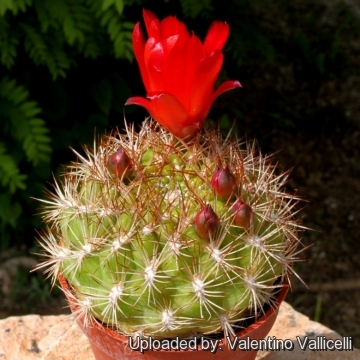
- sp. HS164 (Collector: Heinz Swoboda) Locality: Copavilque, Oropeza, Chuquisaca, Bolivia (Rebutia neocumingii subs. trollii) Photo by: Valentino Vallicelli
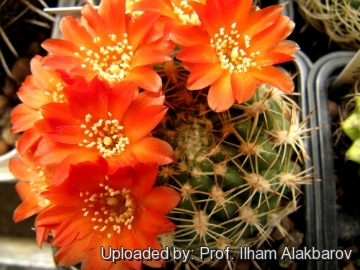
Gymnorebutia neocumingii subs. trollii (Rebutia neocumingii subs. trollii) Photo by: Prof. Ilham Alakbarov
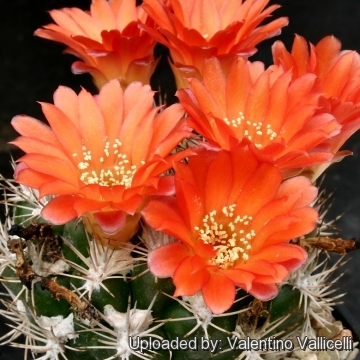
Gymnorebutia neocumingii subs. trollii (Rebutia neocumingii subs. trollii) Photo by: Valentino Vallicelli
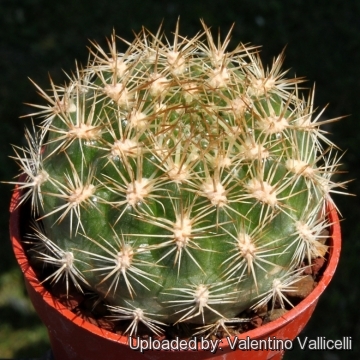
Gymnorebutia neocumingii subs. trollii (Rebutia neocumingii subs. trollii) Photo by: Valentino Vallicelli
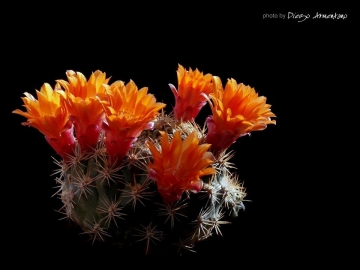
Gymnorebutia neocumingii subs. trollii (Rebutia neocumingii subs. trollii) Photo by: Diego Armentano
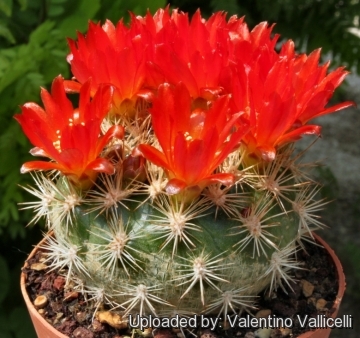
Gymnorebutia neocumingii subs. trollii (Rebutia neocumingii subs. trollii) Photo by: Valentino Vallicelli
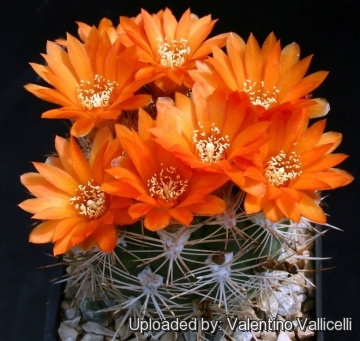
Gymnorebutia neocumingii subs. trollii (Rebutia neocumingii subs. trollii) Photo by: Valentino Vallicelli

Gymnorebutia neocumingii subs. trollii (Rebutia neocumingii subs. trollii) Photo by: Cactus Art
| Your Actions | |
|---|---|
| Back to Gymnorebutia index | |
| Back to Cactaceae index | |
 |
Back to Cacti Encyclopedia index |








